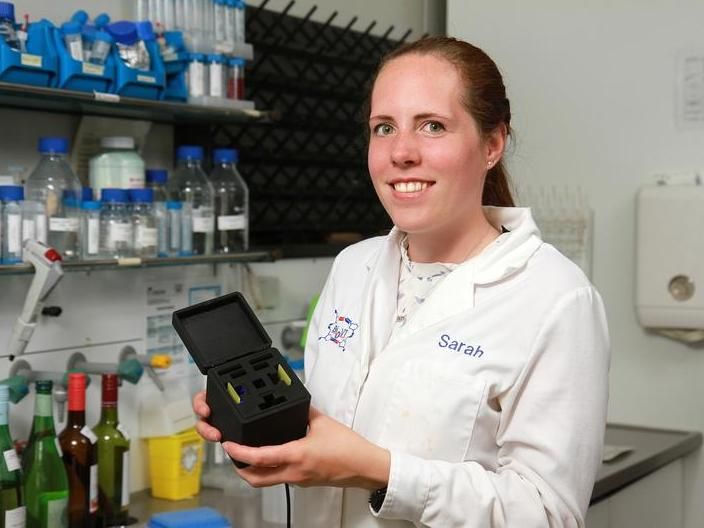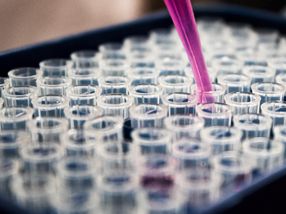How to determine quality criteria such as wine colour easily and quickly with a new test system
A photometer that uses certain wavelengths of light to determine the colour of the wine
Advertisement
Swirling the wine in the glass, holding it against the light and smelling it. There are many criteria that determine the quality of the wine. Not only is this important when the wine is already bottled and on the supermarket shelves, but above all during production, when it is still fermenting. Particularly for small and medium-sized wineries, however, it is almost impossible to monitor the fermentation of the wine. “Many winegrowers do rely on their experience and smell the wine, for example,” says Sarah Di Nonno, who researches on this topic in the Chair of Bioprocess Engineering of Professor Dr Roland Ulber at TU Kaiserslautern. “But even this experience cannot replace an analysis of various parameters.” In the wineries themselves, there is usually not enough space or the financial means for an analytical laboratory on site. “This kind of procedure is also time-consuming and expensive, as samples have to be sent to major laboratories.” If something is wrong with the wine, valuable time is lost for the fermentation to be corrected.
Di Nonno and Ulber's team is therefore working on a simple, space-saving test system that winegrowers can use on site. This system is a so-called photo and fluorimeter, which is intended to be used as a portable device in the winery. It has a chamber into which the wine sample is placed. LEDs generate light of a specific wavelength on one side of the chamber, which is sent through the sample. “On the other side is a so-called photo transistor, a light sensor that measures how much of the light is absorbed,” Di Nonno explains the process.
In the case of larger photometers, the entire spectrum of the light is used. “This, however, is too costly in this case, which is why we only concentrate on single wavelengths.” The researchers use a new calculation method, in which eight sections of this spectrum are sufficient, to calculate the course of the curve and thus directly determine the colour of the wine. For the original colour determination method, 90 measured values are needed, which is why the team only focuses on single wavelengths. “This calculation works. We still have to integrate it into the chamber in a next step,” Di Nonno continues.
Not only the colour of the wine, but also other parameters are interesting to keep an eye on the quality of the wine. These include, for example, the histamine content, the concentration of lactic acid bacteria, the protein stability or the cell viability of the yeast, i.e. how many living yeast cells are in the population. That is another area that is currently undergoing research. The Kaiserslautern team is working closely with colleagues from the wine campus in Neustadt on the topic.
The project “Development of a smartphone analysis system for process control in wine production and in the biotechnology industry” is funded by the German Federation of Industrial Research Associations (Arbeitsgemeinschaft industrieller Forschungsvereinigungen, AiF). Overall, the project aims to develop a test kit for winegrowers to easily check the quality of wine.

The test system is space-saving and can easily be used in the winery.
TUK/Koziel































































